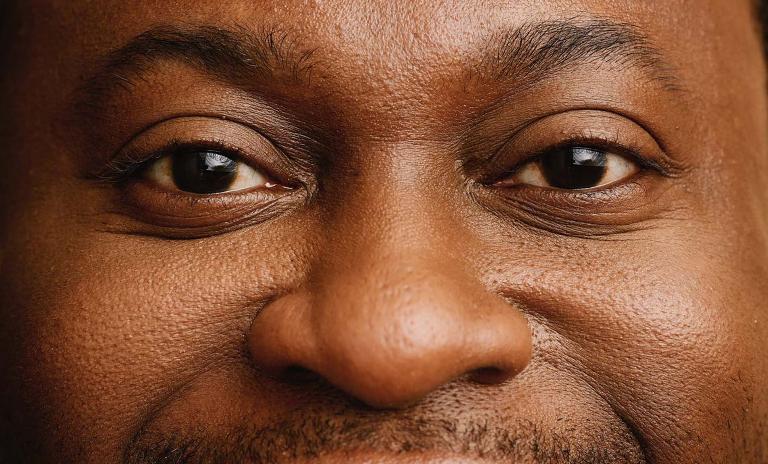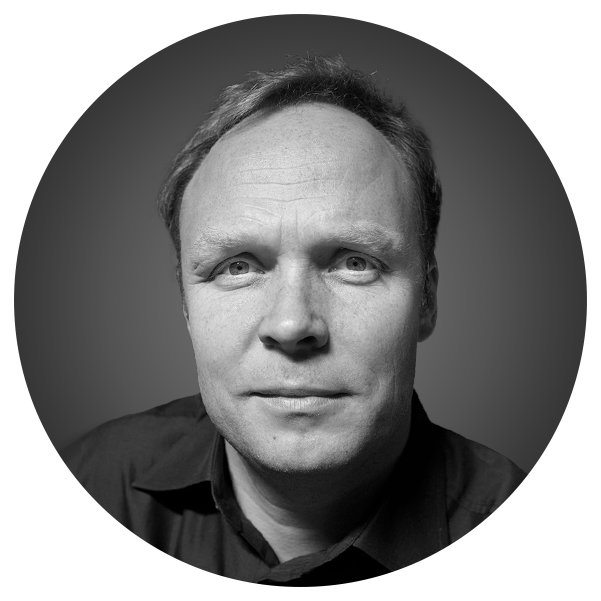Making life better
![{[downloads[language].preview]}](https://www.rolandberger.com/publications/publication_image/ta_35_001_en_cover_download_preview.jpg)
Investing in health is good for individuals and businesses. Think:Act Magazine shows how organizations can help in making life better.



There is a reason to smile. Despite a global pandemic, things are improving. In fact, the virus has been the catalyst for change. Novel collaborations are being forged, with science joining big business to deliver scaled-up solutions for a global problem at unprecedented speed. Technology is accelerating to close gaps in communication and offer AI assistance in diagnoses, while a new emphasis on mental health in the workplace is showing dividends in business. Personal happiness, organizational well-being, cures and prevention and living longer are all a part of the picture. Read on to find out how things are changing and what you need to know and do to contribute to making life better.

How we feel our emotions – and how we deal with them – has finally become a mainstream topic that organizations and governments measure and track. The resulting happiness indices and rankings should be a conversation starter to engage in and broaden the benefits of positive psychology.
What better time to survey how people around the world feel about their lives than during a global pandemic? The ninth World Happiness Report, compiled on behalf of the United Nations and published in March 2021, came to a reassuring conclusion: "There has been surprising resilience in how people rate their lives overall." Covid worries didn't reshuffle the rankings, leaving Nordic countries with their more stable social framework at the top of the list.
Personal happiness, it turns out, is tied to other factors than far-reaching yet ultimately ephemeral disruptions of our daily lives. It has to do with a complex blend of objective and subjective measures, ranging from developmental indicators surrounding socio-economic stability to facets of positive psychology. The fact that global bodies such as the UN, the OECD and the European Union are now regularly tallying how citizens are faring emotionally demonstrates that personal happiness is no longer a mushy self-help term, but mainstream.
"We naturally seek pleasure and avoid pain. On the other hand, we have a strong tendency toward looking at the problems."
One of the biggest proponents of how a positive outlook can change one's life is Tal Ben-Shahar, a former Harvard lecturer. Being negative is the human baseline, he says, but it is not inevitable. "We naturally seek pleasure and avoid pain. On the other hand, we have a strong tendency toward looking at the problems. Pessimists were likely to survive in the past, when we were hunters and hunted," he explains. He now runs a happiness academy and teaches executives and others how to solve the tension between existential angst and what the field calls holistic "flourishing."
Ben-Shahar alongside others in his discipline encourages people to focus on what's working in their lives and to cultivate positive emotions through that. "Emotions – and happiness in general – are contagious. We also become more generous, kinder." What the academic calls "whole-person well-being" encompasses five elements: spiritual, physical, intellectual, relational and finally emotional well-being. Every individual can work on those, he adds, and experience the positive outward-radiating impact.
It starts with remembering that "happiness is mostly dependent on our state of mind, not on our status or bank account," he adds. Taking care of one's body helps, as does expressing gratitude and seeking connection. "The number one predictor of happiness is the time we spend with people we care about and who care about us." Personal time, using kind language and expressing gratitude round out the picture.
A number of countries are now taking this advice to heart and have vowed to prioritize their population's happiness, beyond boosting GDP, with a particular focus on youth well-being. "The happiness movement is very much an extension of the sustainability movement," says Laura Musikanski, a professor and the director of The Happiness Alliance which gathers and publishes global data on the subject. "Happiness can be measured, is being measured, and we're developing ways to understand and use those measurements in different contexts, from policy decisions and organizations to our own personal lives."
She points to New Zealand, which has now published its third "Wellbeing Budget," and similar efforts by Finland, Iceland, Scotland and Canada. Economists and politicians have realized that there is a powerful connection between economic indicators and personal well-being. Often called the "dismal science," economics now endorses its role in boosting people's happiness. "Job security, income security and how secure you feel in your community are key areas," Musikanski says.
The open question is what importance rankings have and how to best measure personal feelings. "The indices in themselves are meaningless, unless they get us to think about happiness and change our ways," says Ben-Shahar. Musikanski adds that gathering data through phone calls or online surveys suffers from shortcomings, like selection bias. It might work better during a general census.
For individuals, a treasure trove of data is available via wearables, from steps taken to sleep hours. Those inputs can indeed be useful, says John Havens, whose books include Hacking Happiness and Heartificial Intelligence. That's if – and that's a big if – we don't use metrics exclusively to optimize ourselves for economic success. "As long as all our technology is being built with the single bottom line or profit in mind, happiness won't happen," Havens says. Instead, personal happiness has to be defined as paying attention to people, planet and purpose. "Every person has worth, from the moment they're born – that has to be the message."

Free yoga classes will not cut it. Organizations need to build and nurture a corporate culture that places their staff's physical and mental well-being at its center and gives them a voice. And if they don't? Simple: The next generation will not go to work for them.
"The risk factors for depression and stress, economic insecurity, layoffs ... reconciling work and family life – all those have gone up."
In his 2018 book Dying for a Paycheck, Stanford professor Jeffrey Pfeffer laid out a dire assessment of the modern workplace: Wanton disregard for the physical and mental well-being of white collar employees creates a toxic stew that literally kills people. Pfeffer offered multi-pronged advice: Employees need to use stress-related metrics in selecting whom they work for; employers have an obligation to measure the costs of toxic management practices; governments need to do something about companies offloading to public health systems; and people need to increase pressure.
Fast forward to 2021 and, according to a long-term study, the WHO estimates that 750,000 people a year die globally from overwork. And the outspoken academic's take on what organizations do about the well-being of their staff hasn't brightened much either. "I'm a data guy, and every piece of data I have seen points to the fact that the pandemic has made things worse," he says. "The risk factors for depression and stress, economic insecurity, layoffs, women in the workforce, reconciling work and family life – all those have gone up." That said, attention to what's commonly called organizational well-being has been gathering momentum, with more CEOs and organizations talking about it and also following up with actions.
It's a logical extension of individual well-being, but it goes beyond offering free yoga or an online therapist. Alana Cookman with The Wellbeing Project, a global coalition striving for social change, defines it as "the ongoing process and practice of organizations placing their human employees at the core of organizational design and operations." That encompasses physical safety, fair access to growth opportunities, recognition and acknowledgment of staff abilities and contributions through things such as fair wages, benefits and opportunities for learning.
Mental well-being in an organization also includes giving staff a sense of agency and control over their work, the chance to influence decisions, express views, develop trust and respect and empower people to be creative and collaborative – which often leads to being innovative. Contrast that vision with the reality at a multinational like Amazon. The company racks up record revenues and profits but has come under sustained criticism for its warehouse working conditions, with annual turnover averaging an astounding 150%. What's more, the company uses algorithms to automatically rank office workers, reportedly with the goal of replacing 6% of them every year.
The process Amazon internally calls "unregretted attrition" in fact might create unnecessary stress among its staff. That might be one reason why former CEO Jeff Bezos recently said: "We need a better vision for how we create value for employees … We are going to be Earth's best employer and Earth's safest place to work." Cookman admits transformation is ongoing, nonlinear and can be derailed or delayed by many factors, but executives and their outlook make a big difference. "Commitment and presence as a leader to bring wellbeing into the culture of an organization is one of the greatest determinants of overall success. This isn't to say it will be plain sailing, there will be points where people will resist, shut down, become overwhelmed, or disengage."
One should start small in placing organizational well-being at the center of a company's culture, recommends Cookman. It starts with more closely tracking metrics such as retention and burnout rates and engaging experts who can help develop new measurements around well-being, agency and work-life balance. Given the complex nature of a concept like organizational well-being, it makes more sense to follow a "microshift" approach, implementing small changes over the course of a few years so they don't overwhelm staff or available resources.
Overall, Cookman thinks that the pandemic has brought setbacks and delays but it's also been helpful since it "increased visibility of dysfunctional and unjust practices in organizations." Even Pfeffer sees a glimmer of hope that change will come: "If I wanted to be optimistic for a nanosecond, the new generation won't put up with this. Young people will not tolerate the absence of attention to mental health and work under those conditions."

Humanity has made significant strides to combat microbes and fend off all kinds of debilitating ailments. Health campaigns and scientific breakthroughs save millions of lives and there is more progress around the bend – that is, if nation-states can return to a spirit of cooperation.
The still-mounting Covid-19 death toll obscures an epochal achievement in the field of medicine: Mankind managed to double its average life expectancy from 40 to 80 years between 1920 and 2020, largely due to scientific advances such as vaccines, germ theory and antibiotics. We bought ourselves, as science writer Steven Johnson calls it, "an extra life."
From tetanus to polio, diseases that once killed millions are now held in check by vaccines. The World Health Organization declared smallpox eradicated in 1980, a rare total victory that cost a mere estimated $300 million. Coupled with more recent scientific breakthroughs such as antiviral pills to treat Hepatitis C, HIV and potentially Covid-19, the amount of progress becomes clear. "I can give you a hundred ways in which the world is better today than in the 1940s or 50s," says American epidemiologist Larry Brilliant, who was part of the WHO's smallpox program.
As examples, he points to modern marvels such as mRNA vaccines, immunotherapy cancer treatments and the potential for gene editing with CRISPR technology. "As we decode the genome and understand the way in which our genes and the environment co-evolved and work together, we will spin off new therapies and treatments," he believes. Brilliant also critiques what's still missing to make life better for all. There are "100 little battles" to be waged to improve life expectancy: "Making drinking water safe, working on nutrition, reducing the death rate of women at childbirth and infant mortality."
Yet what truly troubles Brilliant is the fraying consensus that the global community is in it together. "We have all these great, you could say magical tools, but the post-World War II dream that we need to give up a little bit of our national sovereignty is gone. We live in a centrifugal period where nationalism has infected almost every country to some extent. So many of the diseases that we deal with are externalities of globalization, but we are not in a strong position to deal with them."
Scientists and public health experts have learned important lessons from the latest pandemic – like sequencing viruses and developing vaccines in record time. But Brilliant stresses that the world needs more than success in a lab. It needs to share the fruits of its progress, and quickly. The most encouraging example for solidarity in the face of unknown health threats, he argues, is the WHO's plan for an "international treaty for pandemic preparedness and response" to build a more robust global health architecture. It will be on the body's agenda in November.
Around 7,000 diseases are considered "rare" because they affect relatively few people. Patients have to wait years to even get a proper diagnosis, but new platform sciences and data mining might finally crack the problem.
"We need to look at our lifestyle first. Otherwise, you can take all the supplements out there and nothing will happen in terms of longevity."
In spite of scientific progress, there's a world of diseases – the vast majority with genetic origins – that are little understood. They have names most people have never heard of before, from A1AT deficiency to Zori Stalker Williams syndrome. 7,000 rare diseases are known, yet "fewer than 1,000 diseases benefit from even minimal amounts of scientific knowledge," according to the European Medicines Agency (EMA). A mere 400 of them can be treated with pharmacotherapy.
The term "rare" is misleading since an estimated 25-30 million Americans and another 27-36 million EU citizens suffer from these conditions. Numbers for the Asia-Pacific region peg the patient count at another 258 million. Worldwide, experts estimate that around 400 million people are affected.
The reason lies in the fact that the pharmaceutical industry has traditionally had few economic incentives to invest in and work on such afflictions compared with the revenue created by blockbuster drugs. Both the US and the EU have therefore passed laws and created programs for designated "orphan" diseases to support development and authorization of treatments.
"It takes six to eight years before the average patient gets a diagnosis after visiting five to seven specialists. When you think about the fact that more than half of rare disease patients are children and that a third of them die by the age of five, that's more than a lifetime," says Craig Martin, CEO of Global Genes. The California-based nonprofit is one of several organizations around the world that aims to connect patients, clinicians, researchers and pharma companies by gathering and sharing data on a global scale.
As life sciences become increasingly data-driven, the situation may finally improve. Advances in genetic sequencing, data mining and the rise of personalized medicine, coupled with the experience of developing Covid-19 vaccines at warp speed, offers the opportunity to help those overlooked patients.
Getting the rest of the world to develop and produce its own medications at affordable prices could make a difference, such as in combating diseases like malaria. An often-discussed candidate is India which already supplies half of the world's vaccines. "Making rare diseases a public health priority is the biggest challenge," Martin admits.
Science may be on track to build the tools and therapies that can repair the damage caused by aging, but it's equally critical that the growing ranks of seniors are educated about lifestyle changes, empowering them for more independent care at home.
When it comes to model organisms like roundworms and fruit flies, we know a thing or two about prolonging life. Mahtab Jafari, a pharmaceutical science professor at the University of California, Irvine, has been working with the shortlived insects for nearly two decades and has shown that a handful of botanical compounds can lengthen their lifespan from four to five weeks. "In human terms, that would be 10 to 15 additional years," she says. "Fruit flies are a really good model because they share 75% of our disease genes, but they are only a model, so you cannot simply extrapolate to humans because so many other factors contribute to aging."
Jafari therefore doesn't talk about lifespan but "healthspan" – the number of healthy years in life. While science has done a good job at increasing our lifespan, not enough attention has been given to having people grow old in good health. Instead, we see more chronic diseases of aging arise, from cancer and cardiovascular illnesses to dementia.
The number of elderly is set to increase dramatically. The Census Bureau now estimates that by 2034, Americans over 65 will, for the first time, outnumber the under 18s. "In an ideal world, you live a long, healthy life and then you drop dead," as Jafari sums up her research. She founded the Center for Healthspan Sciences at Irvine as a virtual hub for multidisciplinary research and public outreach. "We need to look at our lifestyle first and educate people about the importance of nutrition, exercise and mental health. Otherwise, you can take all the supplements out there and nothing will happen in terms of longevity."
Fruit flies aside, the debate whether there are natural limits to human life is far from settled. The oldest known person died in France at age 122, and the number of centenarians keeps going up. According to UN estimates, in 1990 the world had 95,000 people 100 and older, 450,000 in 2015. We can expect some 25 million centenarians by 2100.

The life extension camp is convinced that we already possess the scientific knowledge to go on for much longer by fixing the damage wrought by aging. As cells grow old, our biological machinery becomes buggy, and side effects impact the mental and physical function of the body, explains Aubrey De Grey, biomedical gerontologist and proponent of "rejuvenation biotech." The SENS Research Foundation, where he serves as chief science officer, wants to repair damage at the source "without any need to slow down the creation of damage or to make the body more able to tolerate damage." He adds: "The science is basically done, it's all technology from here on."
The rub lies in manipulating those processes that replace and remove senescent cells – the cells that stop dividing and lose their function, and can damage nearby cells and tissue. "We will see a bona fide war on aging," De Grey predicts, "and we will have a decade or more of lead time where we know these therapies are coming and can redesign the infrastructure and incentive structure."
Manipulating natural decay may be within reach, but it doesn't address the profound problem that more and more seniors are both frail and feel lonely. Elder care needs to tackle both, believes Dutch entrepreneur and former nurse Jos de Blok. He founded Buurtzorg back in 2006 to optimize home care. Today, the organization has a presence in over 30 countries. His statistics show people require less professional care if they are embedded in concentric circles of friends, family and caregivers.
In Holland, where his approach has become the national standard, the annual average hours of home care per capita has gone down from 168 in 2014 to 84 today. "We can deal with the care gap if we have more self-management with people in networks." Buurtzorg is expanding its focus from individual to collective prevention through mobility, nutrition and healthy living. It is experimenting with housing for chronically ill patients to make them an integral part of a neighborhood and organizing activities like walking groups.
Thanks to telemedicine and other advances, about half of what's done in hospitals can be done from home, de Blok is convinced. "The hospital of the future is a hospital without walls. You'll still have an expert center, but the specialists and nurses will work inside and outside the walls of the hospitals." He thinks this model will take hold in the next five years, with Buurtzorg working on showcases for what is possible. "The last part [of life] is often called the 'third act,'" de Blok explains. "It should be about quality of life."

![{[downloads[language].preview]}](https://www.rolandberger.com/publications/publication_image/ta_35_001_en_cover_download_preview.jpg)
Investing in health is good for individuals and businesses. Think:Act Magazine shows how organizations can help in making life better.
